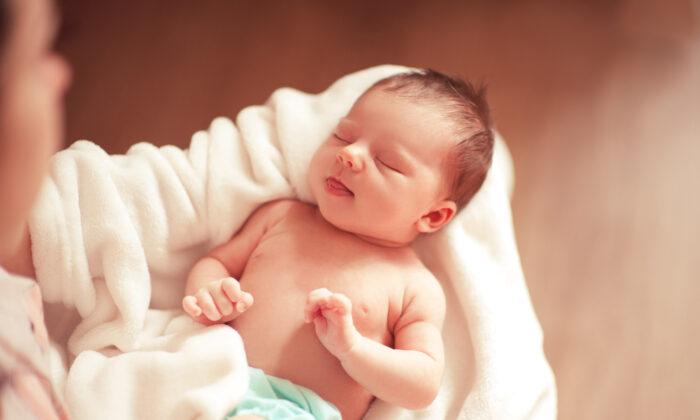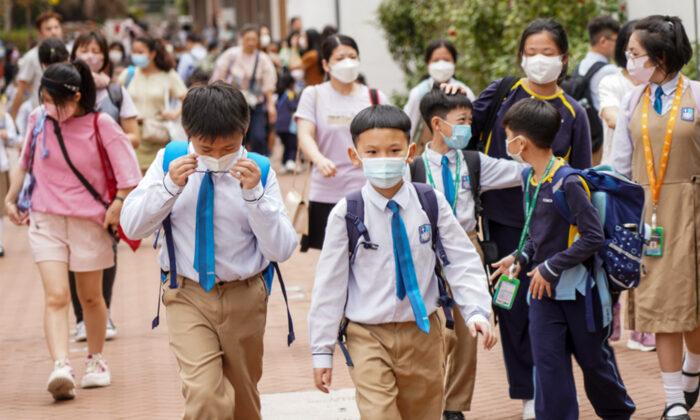Scholars comment that the Chinese Communist Party (CCP)’s destruction of “one country, two systems” has exacerbated the already ultra-low local fertility rate. The long-term consequences could accelerate population aging, lead to a rapid rise in government welfare and medical expenses, and severely damage economic productivity and the potential for social development.
According to the UN report, countries with low fertility rates are home to two-thirds of the world’s population. The report indicates that the average female fertility rate worldwide is 2.3, while the average life expectancy for men and women stands at 71 and 76 years, respectively. Furthermore, 25 percent of the population comprises individuals aged 14 years or younger, 65 percent of the population is aged between 15 to 64 years, and 10 percent of the population is 65 years or older.
Hong Kong has the world’s lowest fertility rate at 0.8, closely followed by South Korea at 0.9, Singapore and Macau at 1.1, San Marino at 1.1, China at 1.2, and Aruba at 1.2. In contrast, African countries like Niger (6.7), Chad (6.1), the Democratic Republic of Congo (6.1), Somalia (6.1), Mali (5.8), and the Central African Republic (5.8) have the highest fertility rates in the world. Hong Kong’s immigrant population primarily relocates to the United Kingdom at 1.6, Canada at 1.5, Australia at 1.5, and the United States at 1.7.
According to projections by The Fund, the global population is expected to peak at around 10.4 billion in the 2080s. Today, India is the world’s most populous country, with a staggering 1.429 billion people.
Birth Rate Hits 30-Year Low
On Feb. 17, the Hong Kong Census and Statistics Department released the February 2023 edition of the Hong Kong Monthly Digest of Statistics. In this publication, the featured article titled “Fertility Trends in Hong Kong from 1991 to 2021” disclosed that the fertility level in Hong Kong has shown a consistent decline over the past 30 years. The fertility rate dropped from 1,281 live births per 1,000 women in 1991 to 901 in 2003. Subsequently, the rate increased to 1,285 in 2012 but has been steadily declining since then, reaching 1,064 in 2019 and falling to 772 in 2021.According to a government spokesperson, Hong Kong has one of the lowest fertility rates among Asian economies, dropping births significantly from 52,900 in 2019 to 32,500 in 2022. Additionally, due to the aging population and the fifth wave of the epidemic in 2022, the number of deaths has increased from 49,000 in 2019 to 62,100 during the same period.
According to a recent report, Hong Kong’s declining fertility rate can be attributed to the rising trend of delayed marriage and women choosing to remain unmarried. In 1991, 56 percent of women between the ages of 25 and 29 were married, but in 2021, this figure is expected to drop significantly to 19 percent. Furthermore, the percentage of women aged 40-44 who have never been married is projected to increase from six percent in 1991 to 20 percent in 2021.
‘CCP Blamed for Further Decline in Fertility Rates’
On April 21, scholar Chong Kim-wah shared his analysis on the Citizens of Our Time Learning Hub YouTube channel, highlighting the CCP’s disregard for the “one country, two systems” principle and their continued infringement on the human rights and freedoms of Hong Kong citizens has further aggravated the already low fertility rate to a dangerous level. According to Chong, the young generation’s fear or reluctance to have children could lead to more problems than just the closure of kindergartens and the long-term reduction of classes in primary and secondary schools. He believes this trend could seriously affect Hong Kong’s future population and calls for urgent action to address this issue.During an interview with The Epoch Times, one of our readers, Mrs. Lam, shared her concerns about having children. She explained that her decision not to have children stems from her worries about the education system and the potential for the next generation to be raised in a CCP-indoctrinated environment. Mrs. Lam shared that “many of her friends with children have either already emigrated to the UK or are planning to do so. Given these circumstances, she believes that if she were to have children, she too would be compelled to leave Hong Kong.”
According to Chong’s prediction, the disparity between “the few born” and “the many fed” will become increasingly apparent in the coming years. As Hong Kong’s population ages rapidly, the government’s medical and welfare services expenses are expected to escalate, hindering society’s generational shift, diminishing the population’s dynamism, and causing severe harm to economic productivity and social development potential.
‘Warns Against Excessive Interference’
On Feb. 8, during a Legislative Council meeting, the Secretary for Labour and Welfare, Chris Sun Yuk-han, responded to a member of the public’s question regarding the public’s decision to have children. Chris emphasized that this decision depends on various factors such as personal choice, lifestyle, economic and social conditions, and more. She also highlighted that having children is a crucial decision for families and that interfering too much is not advisable.Family-friendly measures include a child tax allowance for salaries tax, free education, and the regularization of the HK$2,500 annual student allowance. In addition, increased daytime childcare services, five days of paternity leave, and 14 weeks of maternity leave.




